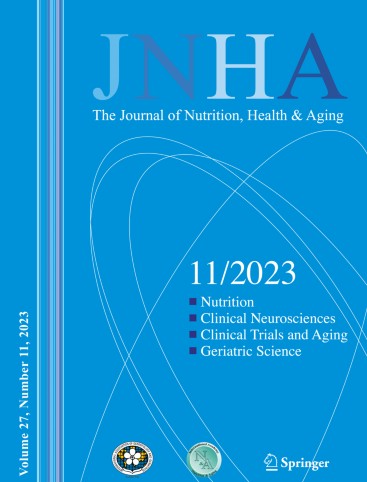Postprandial inflammation across the aging spectrum
IF 4.3
3区 医学
Q1 GERIATRICS & GERONTOLOGY
引用次数: 0
Abstract
Objectives
Postprandial inflammation post-high-fat meals may be linked to cardiovascular disease (CVD). CVD incidence increases with age; however, whether older adults experience greater postprandial inflammation remains unclear. We examined whether analyzing age categorically versus continuously influenced relationships between age and postprandial inflammatory measures.
Design
Cross-sectional.
Setting
Laboratory for Applied Nutrition and Exercise Science at Oklahoma State University (Stillwater, OK, USA).
Participants
56 apparently healthy adults ages 20–69 years.
Measurements
We measured interleukin (IL)-1β, IL-6, IL-8, IL-10, and tumor necrosis factor (TNF)-α at baseline, 2-, 4-, and 6 -hs post-high-fat meal (9 kcal/kg; 70% fat). Data were examined in the full sample with paired t-tests (baseline to peak), by pre-defined age groups (i.e., 18–35, 36–49, 50–59, 60–69) using ANCOVA, and continuously using linear regression.
Results
Across the full sample, IL-1β, IL-6, and IL-8 increased after the high-fat meal (p’s≤0.018). Cytokine differences post-high-fat meal by age category were generally not observed. However, age was positively associated with IL-6 incremental AUC when examined continuously (b = 0.029; p = 0.010).
Conclusion
These data suggest increasing age is linked to a greater IL-6 response to a high-fat meal. Further, examining age continuously may have greater utility when studying aging and postprandial inflammation.
Registration
N/A (secondary analysis)
餐后炎症跨越衰老谱。
目的:高脂肪饮食后的餐后炎症可能与心血管疾病(CVD)有关。心血管疾病发病率随年龄增长而增加;然而,老年人是否会经历更大的餐后炎症尚不清楚。我们研究了分类分析年龄与连续分析年龄是否会影响年龄与餐后炎症指标之间的关系。设计:横断面。地点:俄克拉荷马州立大学应用营养与运动科学实验室(Stillwater, OK, USA)。参与者:56名健康的成年人,年龄在20-69岁之间。测量:我们在基线、高脂餐后2、4和6小时(9千卡/公斤;70%的脂肪)。采用配对t检验(从基线到峰值)对全样本数据进行检验,按预先定义的年龄组(即18-35岁、36-49岁、50-59岁、60-69岁)使用ANCOVA,并连续使用线性回归。结果:在整个样品中,高脂膳食后IL-1β、IL-6和IL-8均升高(p≤0.018)。高脂肪膳食后细胞因子的差异一般不按年龄类别观察。然而,当连续检查时,年龄与IL-6增量AUC呈正相关(b = 0.029;p = 0.010)。结论:这些数据表明,年龄的增长与高脂肪饮食对IL-6的反应有关。此外,在研究衰老和餐后炎症时,持续检查年龄可能有更大的用处。注册:无(二次分析)。
本文章由计算机程序翻译,如有差异,请以英文原文为准。
求助全文
约1分钟内获得全文
求助全文
来源期刊
CiteScore
7.80
自引率
3.40%
发文量
136
审稿时长
4-8 weeks
期刊介绍:
There is increasing scientific and clinical interest in the interactions of nutrition and health as part of the aging process. This interest is due to the important role that nutrition plays throughout the life span. This role affects the growth and development of the body during childhood, affects the risk of acute and chronic diseases, the maintenance of physiological processes and the biological process of aging. A major aim of "The Journal of Nutrition, Health & Aging" is to contribute to the improvement of knowledge regarding the relationships between nutrition and the aging process from birth to old age.

 求助内容:
求助内容: 应助结果提醒方式:
应助结果提醒方式:


